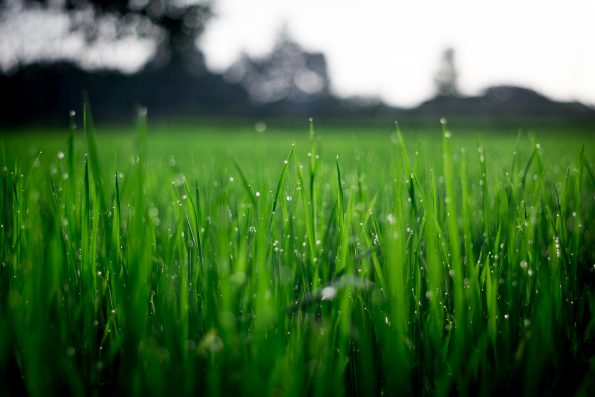A beautiful, green lawn increases the value of any home, explaining why 81% of Americans make an effort to make keep their lawns in tip top shape. Your curb appeal truly depends on how beautiful you keep your lawn. A lush lawn doesn’t just happen, however. It takes time and care to create the type of lawn that begs for bare feet. There are many enemies of a healthy lawn. We’ll explore how to combat the problems that can arise while trying to grow the greenest lawn possible.

Weeds
No matter how much effort you put into lawn care, weeds always find a way to creep in, robbing your grass of the necessary nutrients and water it needs to thrive. A recent landscaping survey found that 82% of homeowners have dealt with weeds in their lawns at some point. The solution is to combat weeds effectively, but the process is multi-pronged.
First, identify the specific types of weeds in your lawn because different ones may require varying treatments. Regularly mowing your lawn at the right height can shade out weed seedlings. You might have to roll up your sleeves and manually remove them for larger weeds. To prevent future weed growth, use pre-emergent herbicides and selective post-emergent herbicides. This way, you’ll maintain control and nurture a healthier lawn.
Thinning grass and the bare patches
Dealing with thinning grass and bare patches can be frustrating, especially when they seem to multiply despite your best efforts. It happens for several reasons, like heavy foot traffic, inadequate watering, nutrient deficiencies, or poor soil conditions. Research from the American Society of Agronomy found that improper lawn care practices cause a whopping 90% of lawn problems. If you have a lawn at home and notice those bare patches, you should consider the causes. The solution to thinning grass is to pinpoint the underlying issue. You can start by reducing foot traffic on your lawn by creating designated walkways or using stepping stones to reduce damage. Ensure your lawn receives sufficient watering, ideally about an inch per week, and aim for early morning watering.
Another thing to consider is to give the grass a nutritional boost. Basic gardening knowledge will tell you to regularly fertilize it with a well-balanced blend of nutrients. Sometimes, you may need to conduct a soil test to identify any deficiencies and address them quickly. A reliable landscaping company can prove helpful in this regard. Do not forget to aerate the soil to rejuvenate your lawn and promote thicker and healthier growth.
Pest infestations
Pests can turn your lawn into a battleground, wreaking havoc and undoing all your hard work. Annoying critters like grubs, ants, moles, and chinch bugs can cause significant damage. According to estimates from the Environmental Protection Agency, these tiny destroyers collectively cost around $2 billion in lawn damage each year in the United States. When it comes to pests, prevention is key. Stick to regular maintenance practices such as proper mowing and watering to discourage pests from settling in. Use insecticides or organic pest control methods to effectively manage and eliminate these unwanted visitors. If the infestation persists, seeking advice from a professional infestation company is wise. They can provide tailored solutions to tackle your specific pest issues.
